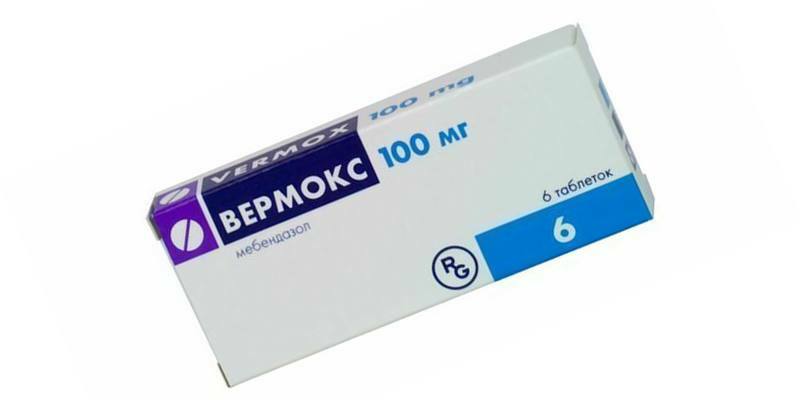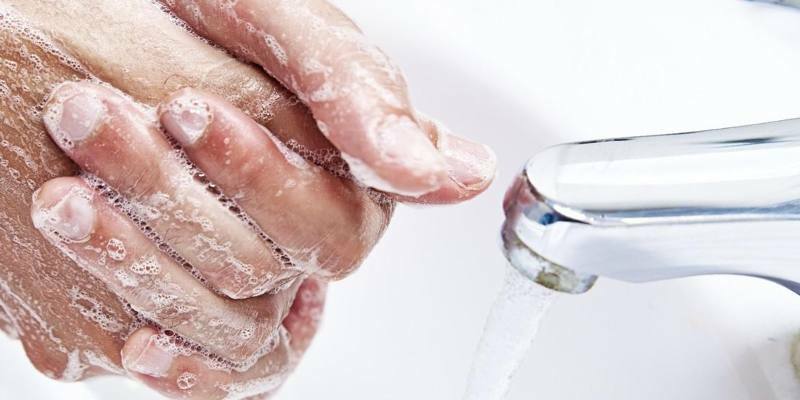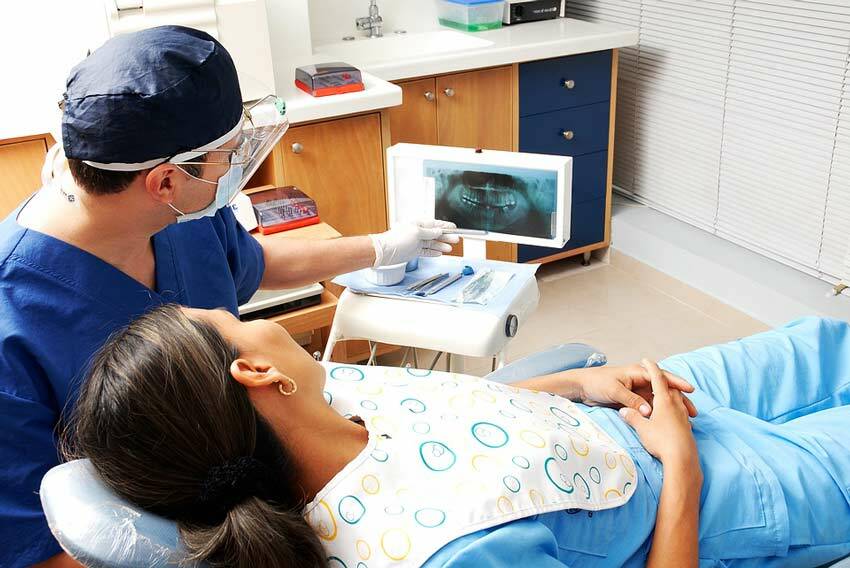
Contents of the page
- 1 Toxocarosis in children - causes of the disease
- 2 Symptoms
- 3 Diagnosis
- 4 Treatment of toxocarias in children
In nature, there are more than 270 species of helminths that can parasitize in the human body. Among them are helminths of animals, for example Toksokary. Toxocarosis in children is diagnosed more often than in adults. This is due to the fact that the child is in contact with the soil, sand during games, communicates with street animals and admits inaccuracies in observing the rules of personal hygiene. Most often, people in rural areas under the age of 14 are exposed to the infection. Toxocarosis in children is difficult to treat and is characterized by a chronic recurrent course leading to damage to the internal organs.
Toxocarosis in children - causes of

disease. Toksokaras belong to the class of nematodes( roundworms).This parasite is atypical for humans, since only in the animal body can it pass the full life cycle of development from the larva to the sexually mature individual. The main carriers of parasites are dogs, cats, pigs, chickens. Adult individuals reach a length of 4-18 cm and colonize the small intestine of the animal.
The Toksokara female can lay 200,000 eggs a day! In the external environment eggs of parasites get through the faeces of animals and can remain in a viable state for up to 15 days. Remaining on the animal's fur or on the soles of shoes, the larvae enter the human dwelling and in such a supportive environment the parasite can remain active throughout the year.
In the body of the baby, toxocare eggs get through dirty hands, after consuming unwashed fruits and vegetables or contaminated by products of larvae that have not undergone heat treatment. Parasitic parasites are insects, mostly cockroaches, which carry eggs, obscuring them with food and household items. From person to person, toxocars are not transmitted, but cases of infection of babies through the placenta( during mother's pregnancy) and breast milk are confirmed. Thus, toxocarosis in children, according to experts, can appear for the following reasons:
- contact with a sick animal;
- dirty hands, violation of hygiene standards;
- contact with sand or soil, contaminated with eggs of parasites;
- use of unwashed fruits, vegetables or meat that has not undergone sufficient heat treatment;
- pregnant women can pass parasites to the child through the placenta, and nursing mothers - with breast milk.
Getting into the body of a child, toxocar eggs are found in an atypical environment for them. In man, they can not develop and pass from the larvae into an adult state.
In the small intestine, larvae form from the eggs, which enter the bloodstream and begin to circulate throughout the body with a large and small circle of circulation. Larvae of toxocar can settle in the liver, penetrate into the lungs and into the right heart through the hepatic veins.
If the child's immune system is strong enough, the larvae settle in the tissues and around them granulomas form. In this form, surrounded by a capsule, they remain viable for many years and with the weakening of the defenses of the body are activated and cause relapse of the disease.
Symptoms of

Often, toxocarosis in children is characterized by a latent( latent) nature of the course and mild symptoms. Symptoms of the disease manifest themselves brightly with a high level of dissemination. At the same time, periods of exacerbation of the disease can be replaced by fairly long remissions, and this state continues for several years.
Clinical manifestations of toxocarias directly depend on the degree of expression of the immune response and on which organs were attacked by parasites. In severe cases, the disease leads to the development of serious health problems and even threatens a fatal outcome in complications affecting the nervous and cardiovascular systems. Depending on which organs were affected, specialists identify several forms of the disease, each of which is characterized by characteristic symptoms.
Visceral .Toxocarosis in children of this form is the most common. It is associated with the defeat of internal organs. The more larvae penetrate the child's body, the stronger the symptoms will be. The main signs of visceral toxocarias in children are:
- attacks of dry cough, especially severe at night. Often they are accompanied by shortness of breath and asthmatic conditions;
- febrile conditions, fever, chills;
- enlargement of groups of lymph nodes;
- abdominal symptoms( abdominal pain, nausea, vomiting, diarrhea), signs of dysbiosis and gastritis, ascites, bloating;
- enlargement of the liver and spleen;
- changes in blood counts( persistent eosinophilia, hypergammaglobulinemia).
- The increase in body temperature is noted mainly in lung lesions. Sometimes severe pneumonia develops with complications( up to a lethal outcome).
Toxocarosis in children of the cutaneous form is manifested by eruptions on the body of an eczematous or erythematous nature. Under the skin of the palms and soles of the feet, small bubbles can be probed, with a biopsy sampling, larvae of toxocar are found in the contents. In the area of the lesion, the skin becomes inflamed and reddens, there is swelling. Skin manifestations are accompanied by a continuous, painful itching. The most vivid inflammatory manifestations occur during the migration of larvae under the skin. Dystrophic changes in the hair and nails of the child may occur.
The eye form most often affects only one eye, affecting its mesh and vascular wall. In this case, inflammatory masses( which are often taken for retinoblastoma) and specific granulomas are formed. The disease is accompanied by keratitis, development of chronic uveitis, endo-phthalmitis, in severe cases, optic neuritis occurs, vision is sharply reduced on one eye.
Toxocarosis in children as a neurological form of is considered to be the most severe and dangerous, since the parts of the nervous system that are responsible for many vital processes are affected. With focal lesions of the brain, convulsions, seizures of epilepsy, paresis, paralysis are observed. In more mild cases, memory impairment, difficulty with reading, and hyperactivity are noted. The child manifests a change in behavior( aggressiveness, irritability), headaches, thinking disorders, sleep disturbances.
Dr. Komarovsky is a popular pediatrician who leads a cognitive program on television, calling toxocarosis in children "a dirty sandbox disease".The doctor says that there is no current therapy that gives a 100% cure for this disease. Toxocarosis in children is treated as well as in adults, with the use of toxic antiparasitic drugs. In this case, the treatment of infection is long, since all drugs used are effective against migratory larvae, but can not destroy toxocar eggs protected by a capsule shell.
As a result, even after the course of antiparasitic therapy, recurrence of the disease is not uncommon, when the larvae become more active when immunity decreases. Therefore, a long and complex process of therapy must be carried out by specialists. Only an experienced infectious disease doctor can select the optimal dosage and drug for the child with minimal side effects, and also give advice on how to treat toxocariasis in children.
Diagnosis of

A doctor may presume infection with toxocaram on the basis of a clinical blood test. With toxocarosis there is a high ESR, a persistent increase in the level of eosinophils, leukocytosis, low immunoglobulin levels. In this case, it is practically impossible to detect toxocar in the analysis of stool.
In a biochemical blood test for parasitic infection, an increase in the level of immunoglobulin and bilirubin will be indicated. The most reliable and informative study to date is solid-phase enzyme-linked immunosorbent assay for toxocariasis. The ELISA method allows us to identify the presence of toxoar antigens and to diagnose correctly.
In addition, the child will be sent to the ultrasound of internal organs, chest X-ray, if necessary, CT methods( computed tomography).In addition, consultation of the oculist, gastroenterologist, neurologist is necessary, which will allow to determine the degree of damage to various organs. On the basis of the results obtained, the infectious diseases specialist will individually select the most optimal treatment regimen for toxocariasis in children.
Treatment of toxocariasis in children

The difficulty of treating toxocarias is that the larvae are surrounded by a protective capsule, through which the active substances of the anthelmintic preparation can not penetrate. Therefore, prescribed medicines destroy only migratory parasites, which ultimately can not guarantee a complete cure and no relapse of the disease. With a weakening of immunity and other unfavorable factors, the remaining larvae become active and again begin to migrate in the body. Therefore, the treatment of toxocarosis has to be carried out in several stages, sometimes it may take several years to completely purify the body.
Children are prescribed the same anthelmintic drugs as adults. In the treatment of toxocarias, the following drugs are considered to be the most effective:
- Vermox .One of the most effective remedies for toxocar. The dosage of the drug for the child is calculated by the doctor individually, taking into account the age, weight, severity of the symptoms. The initial dose for a child for one dose can not exceed 100 mg, as needed, the dosage is gradually increased in accordance with the treatment regimen. The drug continues for 2 to 4 weeks. Vermox is not as toxic as other antiparasitic medicines, but its administration can provoke abdominal pain, nausea, weakness, lack of appetite, diarrhea.
- Mintesol( thiabendazole) .This drug is prescribed at a rate of 25-50 mg per 1 kg of body weight. Take the medicine for 5 to 10 days. Of the adverse reactions, head and abdominal pain, drowsiness, nausea, dizziness, intestinal disorders are noted.
- Ditrazine citrate .The dosage of the medicine is determined by the doctor at the rate of 2-6 mg / kg of the child's body weight. The medicine should be taken from 2 to 4 weeks. Adverse reactions to taking the drug are expressed in nausea, fever, fever, dizziness.
- Albendazole .This agent is often used to treat the ocular form of toxocariasis and is prescribed in a dose of 10 mg / kg of body weight. The course of therapy takes from 10 days to 3 weeks.
- To completely purify the body of parasites, it will be necessary to repeat the course of treatment in three months. With severe lesions, the number of such courses can reach 5-6, and the treatment of toxocarias can last for 2-3 years.
During treatment with anthelminthic drugs, regular monitoring of blood indices and the state of internal organs( liver, kidneys) is necessary. To maintain the body after the end of antiparasitic therapy, vitamin complexes, hepatoprotective preparations, probiotics for the restoration of intestinal microflora, immunomodulating agents are prescribed.
After the termination of medical procedures the child is left under the dispensary supervision for a period of not less than 2 years. In this period, it is necessary to take an analysis of ELISA every month and monitor the picture of peripheral blood.
Also effective drug for the treatment of toxocarias in children will be a drop of Baktefort.
Treatment with folk remedies

In addition to drug therapy, folk recipes can be used using plant and natural bitterness that kill parasites. Here are a few popular folk remedies that have been tested for a long time and have long been used to treat parasitic infections.
- Garlic milk. Cut the garlic head, divide into cloves, chop, pour 200ml of milk and cook. After boiling, hold the mixture on low heat for 10 minutes, then cool, filter and use for the enema procedure.
- Decoction of tansy. This plant with strong antiparasitic properties, its juice is poisonous, therefore it is necessary to use a decoction broth with caution and prepare it in exact accordance with the indicated dosages. To prepare the decoction of 9 dry inflorescences of tansy, pour 250 ml of boiling water and insist under a closed lid for 1 hour. Ready broth filtered, take 4 times a day for 1 teaspoon.
- A therapeutic mixture of wormwood. To make it, mix 1 large spoonful of wormwood seeds with 1 tsp.of liquid flower honey. The mixture is well mixed, divided into three identical doses and taken during the day.
- Infusion of elecampane. First, crush the dried root of elecampane, then 1 tbsp.l.plant raw materials pour 200ml of boiling water and insist for 12 hours. Ready infusion filter and take up to 5 times a day for 1 tbsp.l.regardless of food.
Parents should understand that folk methods with toxocarosis serve only as an auxiliary means, they can not replace medical therapy. Before adding them to the treatment plan, consult your doctor and get approval for such procedures.
Prevention

To protect yourself from parasite infestation, try to instil in children the necessary hygiene skills from an early age. The child should know that you can not sit at the table with dirty hands, pull toys into your mouth, eat unwashed fruits, berries. Take care that the kid during the walk does not contact with the homeless animals and does not play in sandboxes, which often become a place for walking for dogs. In addition, infectious disease experts recommend observing a few simple rules:
- thoroughly rinse vegetables, berries, greens, fruits and chop them with boiling water before giving it to a child;
- meat subject to prolonged cooking;
- not allow the dogs to walk in playgrounds;
- plant on the garden area plants that prevent the spread of eggs of nematodes. These are such cultures as marigolds, calendula, delphinium;
- twice a year to conduct deworming of pets( cats and dogs).
If the child has had an infection with toxocariasis, consult a doctor about what medicines can be used to prevent the disease and not allow repeated relapses of the disease.
A child from an early age should know that you can not take food with dirty hands, and after a walk you should definitely wash your hands with soap. Today in large cities you can often meet flocks of stray animals, and you can forget about the cleanliness of sandboxes at playgrounds altogether. So the care of the child's health is directly borne by the parents, who should carefully approach this issue in order to prevent infection and protect the baby from helminthic invasions.
Feedback on the treatment of the disease
Review №1
Last summer, my son was ill with toxocarosis. He is only 3 years old, recently began to attend kindergarten. Parents have repeatedly noticed on the territory of the kindergarten of stray animals and feared for the health of children. During walks children play in sandboxes, in which dogs used to roam before, and nobody can vouch for the purity of sand. I think that the child got infected in this way. It all began with a fever, barking cough, wheezing. First, we wrote off these manifestations in a banal ARD, but after treatment the baby did not get better. There was nausea, headaches, rashes on the body. The pediatrician sent us to the infectious disease specialist, after the examination it was found out that the child is sick with toxocarosis. I had to undergo 2 courses of treatment, repeated-after 3 months. It is necessary to completely get rid of the remaining larvae. Now the baby feels fine. But we are on dispensary registration and every month we take tests. While everything is clean, I hope that we are cured completely.
Xenia, SPB
Review No. 2
Her daughter( she is 12 years old) was diagnosed with toxocar. Recently, she felt unwell, constantly complaining of abdominal pain, nausea, insomnia. We think that I got infected from a stray cat, which I picked up in the yard and then put it in good hands. Had a long time to be treated. A total of 3 courses of antiparasitic drugs were completed. Because they are all toxic, they often had side effects: vomiting, headaches. Now the tests are good, the daughter has now understood a lot and carefully monitors personal hygiene, and stray animals bypasses.
Alevtina, Moscow
Review No.3
Treated a child of toxocarias for almost a year. During this time he underwent several courses of therapy, had to take toxic medications, but the result is. All the unpleasant symptoms of infection disappeared, the child feels completely healthy. But we still have to monitor blood counts and regularly come to a doctor for advice. Now we try to observe preventive measures to avoid re-infection and prevent relapse of the disease.
Constantine, Yekaterinburg



